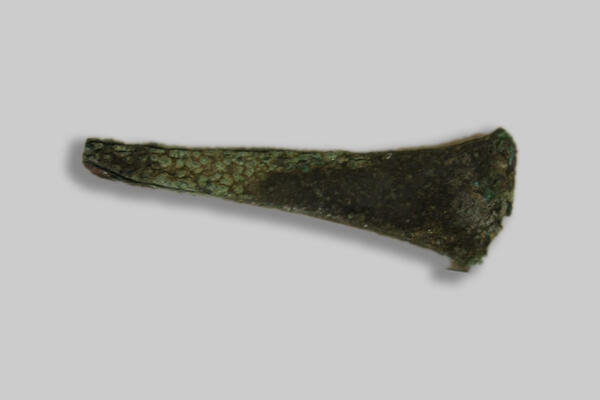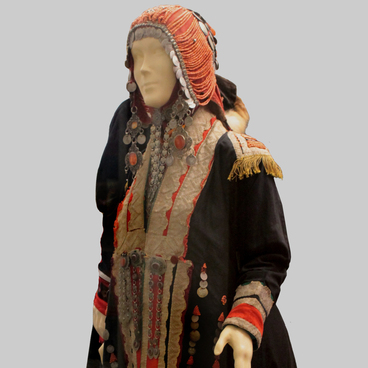In the first half of the 2nd millennium B.C., the area where modern Bashkortostan now is was included in the geographic range where ancient Indo-European tribes settled: representatives of Bronze Age cultures.
Within the community that occupied the forest steppe and semi-steppe regions across the Trans-Urals, the southern part of West Siberia, and Northern Kazakhstan, researchers distinguish between three groups of tribes. One of them lived in the modern Bashkir Trans-Urals, in Chelyabinsk Province, Kurgan Province, and in the eastern part of Orenburg Province. Finds from this time in this land area are called the Alakul archaeological culture — this comes from the burial mound that was excavated near Lake Alakul in Chelyabinsk Province.
On the territory of the Republic of Bashkortostan, monuments from the Alakul culture are located in the basins of the Miass, Sakmara, and Ural rivers. These are the Baishevskiy burial mounds, the Ivanovskiy burial mounds, the Tavlykayevskiy burial mounds, the Tavlykayevskiy settlement, the Tanalyk, Tyubyak, and Yumakovskiy settlements, and the Sakkrakovskiy settlements. The settlements are located on riverbanks, and have no fortifications. The dwellings are two-room half dugouts with a post structure, elongated rectangular pits, and a lean-to roof. Their ceramics are represented by jars and pot-shaped vessels with a recess separating the neck from the body that has a complex geometric ornamentation, and is made ridged and with a flat stamp. Items from bone have been found — needles, arrowheads, awls — as well as metal ones, such as knives, fragments of casting molds, sickles, and adzes. The adze, which was found in the Sukrakovo settlement, was made of bronze by casting and forging.
Sukrakovo I settlement is located in a small valley formed by the hills of a mountain range that runs along the Kizyatash River. The territory of the settlement is located on a slope, with a height differential of up to 8 meters. The territory of the monument as a whole is bordered by hills with diabase rock outcrops to the east and southwest. Currently, the area has been flooded by water from the Kizyatash Reservoir.
On the territory of the Republic of Bashkortostan, monuments from the Alakul culture are located in the basins of the Miass, Sakmara, and Ural rivers. These are the Baishevskiy burial mounds, the Ivanovskiy burial mounds, the Tavlykayevskiy burial mounds, the Tavlykayevskiy settlement, the Tanalyk, Tyubyak, and Yumakovskiy settlements, and the Sakkrakovskiy settlements. The settlements are located on riverbanks, and have no fortifications. The dwellings are two-room half dugouts with a post structure, elongated rectangular pits, and a lean-to roof. Their ceramics are represented by jars and pot-shaped vessels with a recess separating the neck from the body that has a complex geometric ornamentation, and is made ridged and with a flat stamp. Items from bone have been found — needles, arrowheads, awls — as well as metal ones, such as knives, fragments of casting molds, sickles, and adzes. The adze, which was found in the Sukrakovo settlement, was made of bronze by casting and forging.
Sukrakovo I settlement is located in a small valley formed by the hills of a mountain range that runs along the Kizyatash River. The territory of the settlement is located on a slope, with a height differential of up to 8 meters. The territory of the monument as a whole is bordered by hills with diabase rock outcrops to the east and southwest. Currently, the area has been flooded by water from the Kizyatash Reservoir.
Depressions can be made out at the bottom — they are probably the remains of half dugouts from the Bronze Age. The dwellings bend around ditches, and scientists presume that they were intended to drain snowmelt and rainwater.



